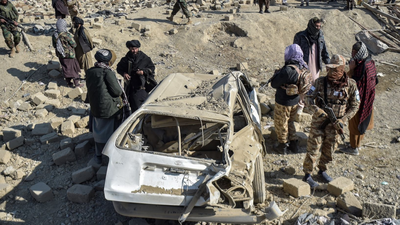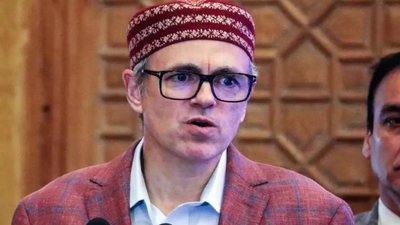
Pakistan has acknowledged allowing the US to operate drone strikes from its territory targeting militant groups in neighbouring Afghanistan. The shocking admission, made during peace talks with the Taliban in Istanbul, shed light on Islamabad’s dependance on Washington, centered around controlling the Tehrik-i-Taliban Pakistan (TTP) and the Afghan Taliban.
The admission reinforced widely held assumption that Pakistan quietly permitted US drone operations from bases near its border with Afghanistan to weaken insurgent sanctuaries across the porous frontier. These highly precise strikes aimed at eliminating key militant leaders helped constrain cross-border terror attacks that also affected Pakistani soil. Notably, Pakistan’s military and intelligence agencies collaborated with the US to share intelligence, making these operations effective.
TTP emboldened
The TTP, an umbrella organisation of Pashtun militant factions vehemently opposed to the Pakistani state’s writ, has been a primary security challenge for Islamabad. The group regularly conducts attacks within Pakistan, fueling internal instability and sectarian violence. Pakistan’s army has fought multiple offensives to suppress the TTP, but success has been limited due to the militants’ cross-border refuge and complex tribal affiliations.Here, US drone strikes and intelligence support played an outsized role in checking the TTP’s leadership and operational capabilities. The US presence, along with pressure on the Taliban to limit TTP freedom, created some strategic buffer for Pakistan.With the US military’s withdrawal from Afghanistan in 2021, Pakistan’s security calculus shifted dramatically. The vacuum invited the Taliban to return to power, but it also emboldened the TTP to increase attacks inside Pakistan, exploiting the chaotic border regions. Without active US military support and drone surveillance, Pakistan has been visibly struggling to keep the TTP in check.
Outsized role of US
The US has played a crucial strategic role in Pakistan’s counterterrorism efforts, especially against the Tehreek-e-Taliban Pakistan, primarily through targeted drone strikes that eliminated key militant leaders. These strikes significantly disrupted the TTP’s command and operational capabilities and sent strong deterrent signals – much to the relief of the Pakistani establishment.
- Baitullah Mehsud (2009): Baitullah Mehsud was the founder and first emir of the TTP from 2007 until his death. He was a central figure behind many major terrorist attacks, including the assassination of former PM Benazir Bhutto. On August 5, 2009, a US Central Intelligence Agency drone strike in South Waziristan targeted a vehicle carrying Baitullah Mehsud and fatally wounded him. Though initial confirmation was delayed and denied by some TTP sources, it was later established that Mehsud died from injuries caused by the strike. His death dealt a significant blow to the TTP’s cohesion during that period.
Hakimullah Mehsud (2013): Hakimullah Mehsud succeeded Baitullah as TTP leader and became one of the most notorious militants targeting both Pakistani and Western interests. On November 1, 2013, Hakimullah was killed in a US drone strike targeting a TTP compound in North Waziristan’s Dandey Darpakhel area. This attack took out not only Hakimullah but also several senior commanders and bodyguards, severely affecting TTP’s leadership structure.Mullah Fazlullah (2018): After Hakimullah’s death, Mullah Fazlullah took over TTP leadership. He was known for his brutal enforcement of strict Sharia laws and opposing peace negotiations. On June 14, 2018, the US conducted a counterterrorism drone strike in the border region between Afghanistan’s Kunar province and Pakistan, killing Fazlullah.
These targeted killings systematically degraded the TTP’s leadership and disrupted their operational planning and coherence. The US deployed surveillance and strike capabilities, especially drone technology, that allowed for precision targeting in Pakistan’s tribal regions, which were difficult for Pakistani forces to penetrate due to the terrain and militant entrenchment.With each removal of a senior leader, insurgent groups experienced internal power struggles, factionalism, and temporary decreases in attack frequency. The drone strikes also sent a strong message that the US maintained a capability and willingness to strike across borders, reinforcing Pakistan’s efforts to combat militancy.The US’ partnership with Pakistan’s intelligence agency (ISI) had a crucial role in enabling these operations. This cooperation involved sharing intelligence, negotiating operational zones, and allowing US drone flights in key tribal regions. The departure of US forces from Afghanistan in 2021 dramatically shifted this dynamic. The US disengagement meant an end to the drone campaign and reduced direct American intelligence and counterterrorism operations targeting TTP leaders and militants in the border regions. The strategic vacuum generated by this withdrawal allowed the TTP and other militant factions to regroup with the complicity or at least tacit tolerance of the Taliban authorities in Afghanistan.Pakistan’s own military operations have persisted, but the absence of US drone strikes and intelligence support has blunted the effectiveness of Pakistan’s counterterrorism campaign.
Surge in terror
Recent months have seen a wave of deadly attacks, including suicide bombings, ambushes on military convoys, and targeted killings of security personnel. The TTP’s tactics have grown bolder, with attacks occurring not only in the traditional conflict zones of Khyber Pakhtunkhwa and Balochistan but also in urban centers like Peshawar and Karachi.The surge in TTP attacks has had a profound impact on Pakistan’s internal security. The military, already stretched thin by counterinsurgency operations in Balochistan and the ongoing tensions with India, is struggling to respond effectively. The government’s attempts to launch new military offensives have met with limited success, and the security situation in the tribal areas remains volatile.The civilian population has borne the brunt of the violence. Schools, markets, and public spaces have become targets, leading to widespread fear and displacement. The psychological toll of living under constant threat cannot be overstated. The government’s efforts to reassure the public have been undermined by the persistent attacks and the perception that the state is losing control.






